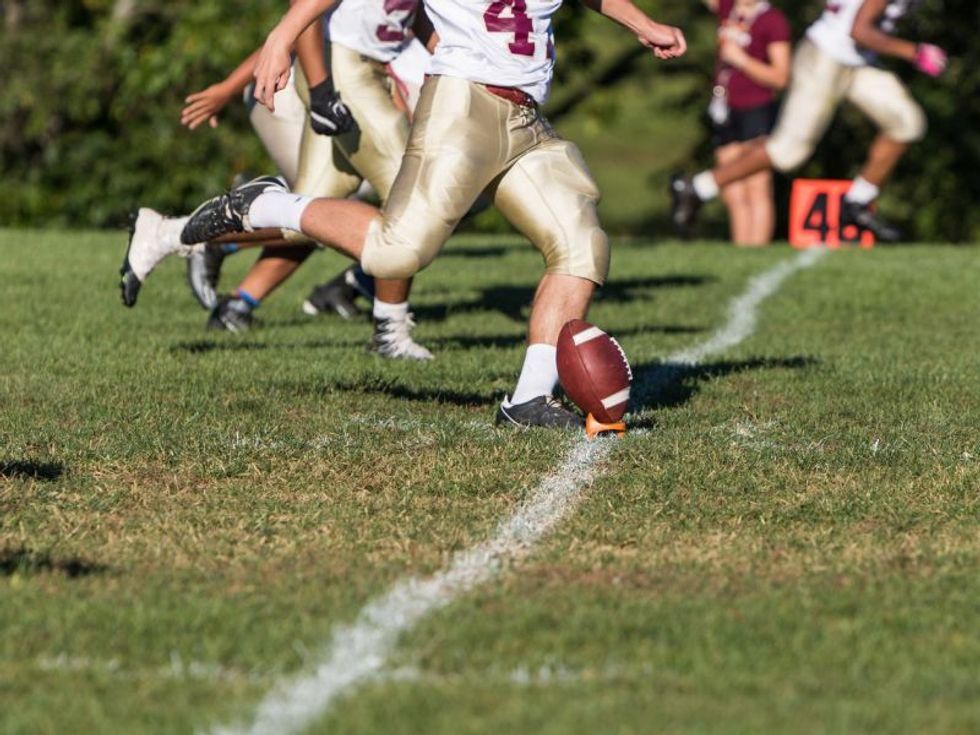
Having a genetic heart condition often means the end of sports for young athletes, but new research could be a game changer.
A 20-year study by the Mayo Clinic in Rochester, Minn., suggests that for kids with most genetic heart conditions, the risks of playing sports can be managed through a shared decision-making process.
The study is a continuation of research on return to play that genetic cardiologist Dr. Michael Ackerman, director of Mayo’s Windland Smith Rice Genetic Heart Rhythm Clinic, first published in Journal of the American Medical Association in 2012.
“When I joined Mayo Clinic’s staff in 2000, we rejected the prevailing approach to athletes with genetic heart diseases that was embraced throughout the world: ‘If in doubt, kick them out.’ After seeing the demoralizing and destructive effects of disqualification on athletes, we decided to embrace a shared and informed decision-making process,” Ackerman said in a Mayo news release.
The researchers followed 672 patient athletes with genetic heart diseases that predisposed them to disease-triggered sudden cardiac arrest — the sudden loss of heart function. This included 495 with long QT syndrome, a genetic heart disease that can cause fainting, seizures, sudden cardiac arrest and sudden cardiac death. The other 177 patients had conditions including hypertrophic cardiomyopathy, in which the heart muscle becomes abnormally thick.
The study included athletes participating in organized, competitive sports between 2000 and 2020.
No deaths were related to sports in the athletes diagnosed with genetic heart disease who decided to return to play in follow-up. Non-fatal events that did happen during and beyond sports included fainting due to arrhythmia, seizures, symptomatic ventricular tachycardia, and appropriate shocks from their implantable cardioverter-defibrillator (ICD).
During those years, 29 patients with long QT syndrome had one or more related breakthrough cardiac events. The patients with other genetic heart diseases had 14 non-lethal cardiac events during the return-to-play time.
The researchers reviewed each athlete’s record for clinical details, treatments, breakthrough cardiac events and the sport or sports played. The return-to-play time was unique to each athlete.
Shared decision-making for a return to play has an important series of steps that are critical to its success, Ackerman said.
This includes thorough testing, a customized treatment plan, discussion of risks, a review of current guidelines for sports participation and a unanimous decision by the parents and the athlete. Then they inform coaches and school officials and put in place safety measures, such as having a personal automatic electronic defibrillator.
Other safety measures include avoiding QT-prolonging drugs in the case of long QT syndrome, maintaining proper hydration and electrolyte balance, and having annual follow-up consultations with their genetic cardiologist for risk reevaluation and treatment review.
Ackerman cautioned that return to play isn’t for everyone. For some athletes, particularly those with a specific type of genetic heart disease that accelerates with sports activity, the shared decision-making process meant recommending the athlete not return to their sport of choice. Ackerman said that 15% to 20% of his athletic patients come to a family-based decision of sports disqualification after evaluation.
The findings were presented virtually at the Heart Rhythm Society annual meeting on Tuesday and published in the Journal of the American College of Cardiology.
More information
The U.S. Centers for Disease Control and Prevention has more on genetic heart diseases.
SOURCE: Mayo Clinic, news release, July 27, 2021
Source: HealthDay
Copyright © 2024 HealthDay. All rights reserved.

Leave a Reply